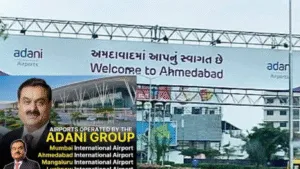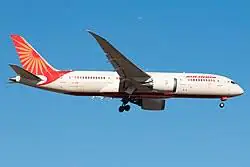“The crash happened on Thursday, June 12, 2025, and it is still being talked about. On the occasion of Rajendra Babu’s birth anniversary, I was busy at the office with the task of launching some book publications. During that time, my mobile phone was on silent mode. When I finally checked it, the first thing I noticed was a shocking news update. A video and message from home revealed that a plane had crashed in Ahmedabad just moments ago, falling directly on the hostel of the prestigious medical college in Gujarat – B.J. Medical College. The tail end of the plane was visibly lodged on the hostel building in the footage. A sense of dread spread in our family, as only a few months ago, Dr. Ashutosh, whom we regard as a son, had joined this very college for his post-graduation. Upon calling to get more information, we learned that the flight, Air India AI-171, was en route from Ahmedabad to London. It was a Boeing 787 Dreamliner, considered among the best from the American aircraft manufacturer. The massive section of the plane had hit directly over Ashutosh’s hostel. A large part of the building collapsed while another part caught fire. Fortunately, Ashutosh had been on hospital duty at the time. However, one of his friends, who was resting in the room after a night shift, tragically died in his sleep from burn injuries. Ashutosh’s room was completely gutted.
Although initial reports mentioned the deaths of five PG medical students, later it was revealed that around 75 doctors were still missing. Of the 242 passengers, pilots, and crew on the plane, only one person miraculously survived; all others died. Families of the missing doctors still wait in anguish for updates. Nearby hostel residents and faculty members have been ordered to evacuate, but no proper alternative arrangements have been made. Despite the chaos, the doctors have no time to grieve. Identifying charred bodies through DNA tests and searching for their deceased colleagues has become their grim challenge.
We pay our deepest respects to the two experienced pilots, crew, and passengers who lost their lives on Air India’s AI-171 flight. On behalf of our readers and writers, we also extend heartfelt condolences to their grieving families.
Why did such a modern aircraft, considered a marvel of engineering, crash before it could even ascend properly? Why was an experienced pilot compelled to send a desperate final message to Air Traffic Control? These questions have fueled intense debates across media. While so-called “experts” offer analytical theories, social media is rife with unverified stories. We urge everyone not to fall for misinformation until a full and impartial investigation is conducted. But in today’s world, trusting in true, unbiased investigations has become a matter of faith.


It is doubtful whether Boeing will accept if a flaw in their aircraft design is responsible. With rapid global growth in aviation, both aircraft numbers and the airspace have expanded massively, turning the sky into a bustling marketplace. The main competition lies between two giants – America’s Boeing and France’s Airbus. Neither wants to lose market ground. If Boeing’s prized 787 series faces negative reviews, it could swing the market in Airbus’s favor.
The liberalization, privatization, and globalization trends have made air travel an aspirational necessity. The “Sky Market” has now reached an exciting and challenging stage. The middle and lower-middle class in India are increasingly choosing air travel. As a result, demand for both aircraft and airports has surged.
In 2004, India had 50 airports. By 2014, it rose to 74. Plans for 2024–25 aimed to expand that number to 220. Aircraft numbers have risen from 243 in 2004 to over 800 in 2024, with a target of 1,400 aircraft in 5 years and 3,800 passenger planes in 20–30 years.
Yet, no one is discussing how much fuel will be consumed or how much pollution will result from this growth. The Government of India is now taking steps to open airports even in district headquarters. According to estimates, by 2047, the centenary of India’s independence, over 1.3 billion Indians could be taking to the skies, alongside foreigners.
Back in 1947, only 250,000 Indians traveled by air. This astronomical increase may be seen as a development milestone. However, nearly all of India’s sky market is now in private hands. Over the past 11 years, government-owned airports have steadily transferred to private companies. The land remains under government ownership, but real control lies with private corporations.

At the forefront is Gautam Adani, a close ally of PM Modi. Fourteen airports are already under private control, including Ahmedabad’s Sardar Vallabhbhai Patel International Airport, from where the ill-fated Air India flight took off. Since 2020, that airport has been under Adani’s control via Adani Airport Holdings Ltd., which now operates six other airports. Among the next 25 airports listed for privatization, Bhubaneswar airport is on top. Most will likely go to Adani Group for the next 50 years.
So, over 1 billion people will fly, there will be 3,800 aircraft, hundreds of airports – but what is glaringly missing is government accountability. While aspirations to fly have risen dramatically, there seems to be little oversight on passenger safety and public welfare.
Is it not a concern that our safety in the skies is now in the hands of profit-driven corporations, while the government watches from the sidelines? The fate and future of air travelers may be increasingly tied to the interests of a few private entities.
(The English Translation of the Editorial written originally in Odia is presented here by Samadrusti team with the help of AI–)
Comments
0 comments







